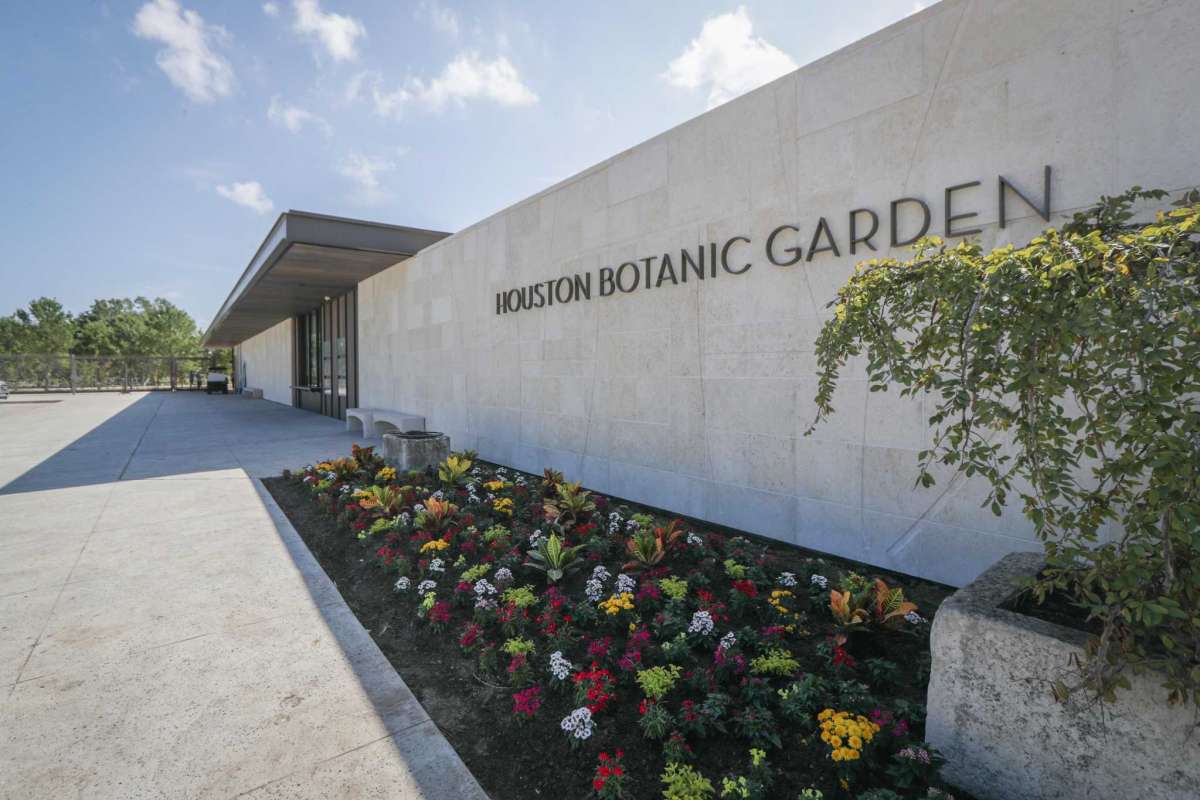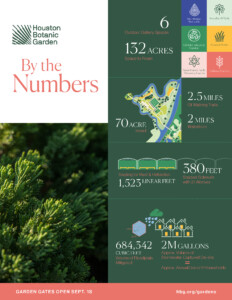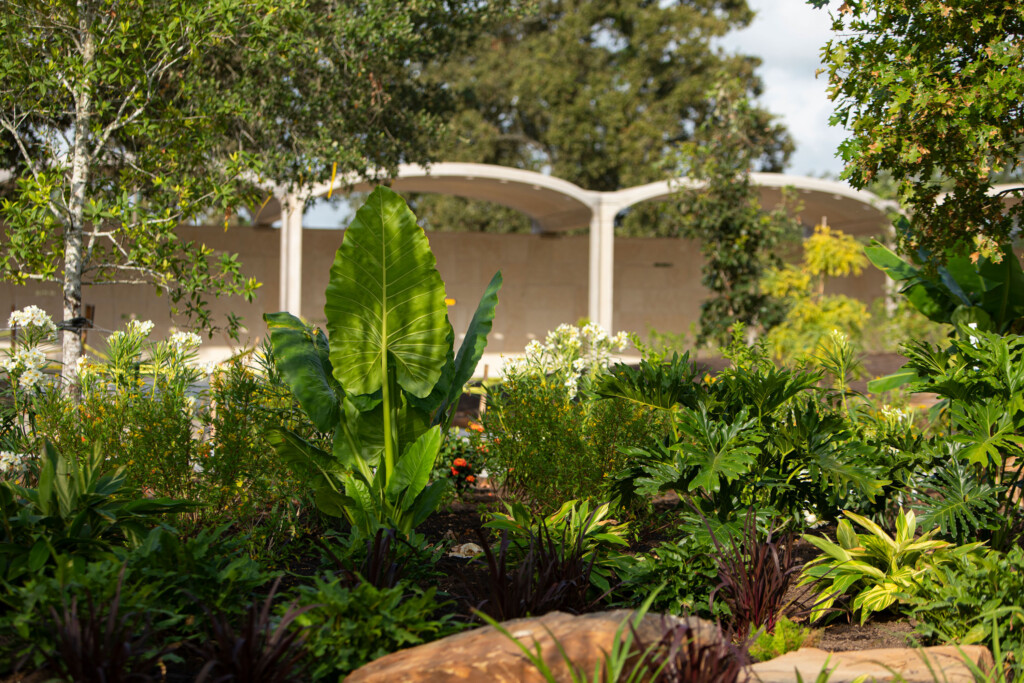
Photo: Steve Gonzales, Houston Chronicle / Staff photographer
 The $26 million, multi-phase project is led by international urban design and landscape architecture firm West 8. Phase I weaves together four distinct natural areas: bayous and wetlands, a hands-on children’s garden/play area, an expansive picnic grove, and voluminous tree farm, with just over two and a half miles of walking trails that traverse among the diverse landscapes.
The $26 million, multi-phase project is led by international urban design and landscape architecture firm West 8. Phase I weaves together four distinct natural areas: bayous and wetlands, a hands-on children’s garden/play area, an expansive picnic grove, and voluminous tree farm, with just over two and a half miles of walking trails that traverse among the diverse landscapes.
As a partner of West 8’s architectural collective, in collaboration with the Houston Botanic Garden, Overland Partners designed the Welcome Pavilion to greet visitors and create a strong first impression of the preserve. The facade of the 2,334 square foot building, dubbed the Welcome Wall, is made from coral stone in differing patterns that feature a botanic motif; inside is a ticketing center, gift shop and restrooms. As the first stop upon entry to the Garden, the pavilion works in harmony with the surrounding landscape, inviting guests to learn more about the natural world.
Setting the tone of a harmonious and upbeat experience while ensuring visitor comfort, especially during Houston’s hot summer months, were key components to our design strategy of the Welcome Pavilion.
— Overland Partners’ Senior Architect Charles Schneider, AIA, LFA.
Schneider said they positioned the pavilion to take advantage of solar orientation for effective shading in Houston’s hot environment, and to capture prevailing breezes to naturally cool the outdoor spaces. In addition, the design allows visitors to view many of the public parts of the Garden, ensuring they feel connected to it even when indoors.
In terms of the material pallet, Schneider said they strove for a more restrained aesthetic that complimented the tones of the Garden without drawing attention to itself. “Selecting sustainable materials like Kebony siding was a much more responsible choice that lends credence to the values of the Garden,” he said.
The Pavilion offers indoor and outdoor patio seating so guests have the option of overlooking the Pine Grove and Edible Garden. In addition, the Pavilion’s central location, climate-controlled interior, and generous overhead canopy outside will make it a natural gathering spot among visitors.

Top Design Attributes / Materials of HBG’s Welcome Pavilion:
- The Welcome Wall – The coral stone walls were originally conceptualized by West 8 as an organizing and wayfinding element within the garden master plan. Overland worked with West 8 to integrate the Welcome Pavilion with the main entry wall, guiding visitors from the parking gardens towards the entrance. The walls feature CNC-carved organic botanic motifs designed by West 8.
- The Roof – A central theme in West 8’s master plan was the need for shade. The flat plane of the roof is intended to compliment the design of the garden walls while providing protection from the intense Houston sun.
- The Porch – The roof of the entry transitions to a deep, south-facing porch oriented to take advantage of prevailing summer breezes while offering a shady place to grab a bite and look out over the Culinary Gardens.
- Primary Materials:
- Coral Stone – from a family run quarry in the Dominican Republic, West 8 sourced the block stone first as an adaptive reuse of bi-product from the quarrying process. This waste material from the crust of the quarry was used at the entrance fountain. The building and wall material is from the same quarry. The expressive and varied inclusions of corals was a fitting material for the garden walls.
- Kebony Wood Siding – sustainably harvested wood certified by Forest Stewardship Council (FSC); modified using bio-chemicals to strengthen and preserve the wood making for a long-lasting, beautiful, and green alternative to commonly used, illegally harvested South American hardwoods. The wood’s rich color will naturally patina over time, turning a silvery-gray and continuing to recede into the background as the landscape matures.
“It has been an incredible journey to see this world-class garden come to life and understand the significance it will play for generations of visitors as they learn about the natural world,” said Overland Partners’ CEO Rick Archer, FAIA. “Pair that with the experience of working alongside visionary landscape architects West 8 who care deeply about the world, while celebrating its beauty, and our team at Overland feels fortunate to have been a part of this project,” Archer continued.
HBC is located at One Botanic Lane, Houston, TX, 77017, approximately 10 miles from downtown Houston, just east of I-45. The closest existing address (for more accurate directions via web-based/mobile mapping) is 8210 Park Place Blvd., Houston, TX 77017. More details can be found at hbg.org.
Creating places that can’t be built by anyone else
…for anyone else.
